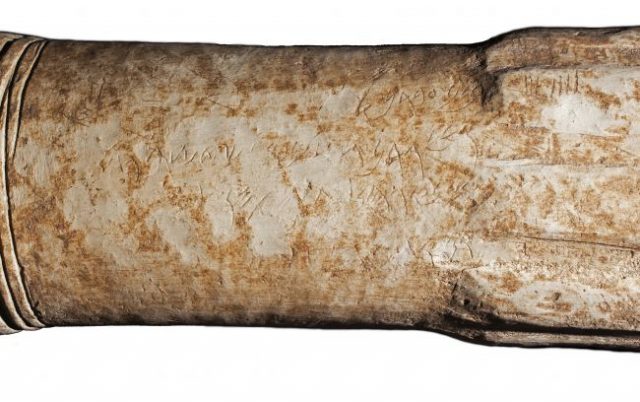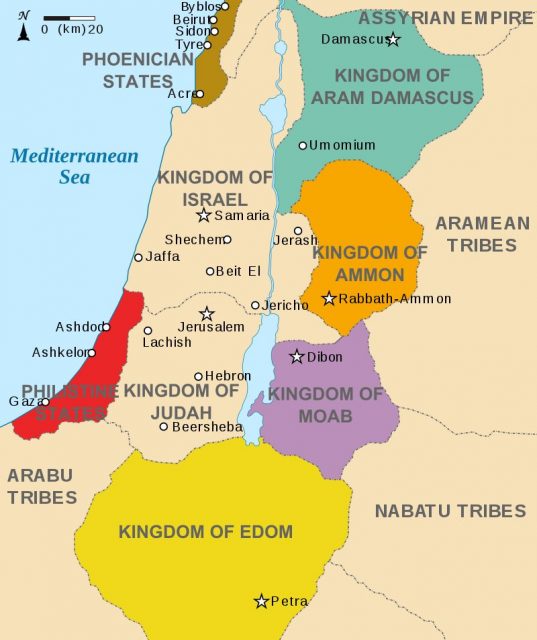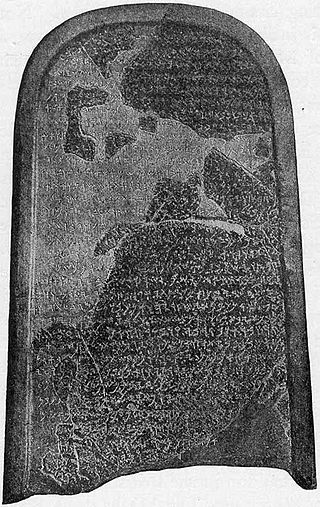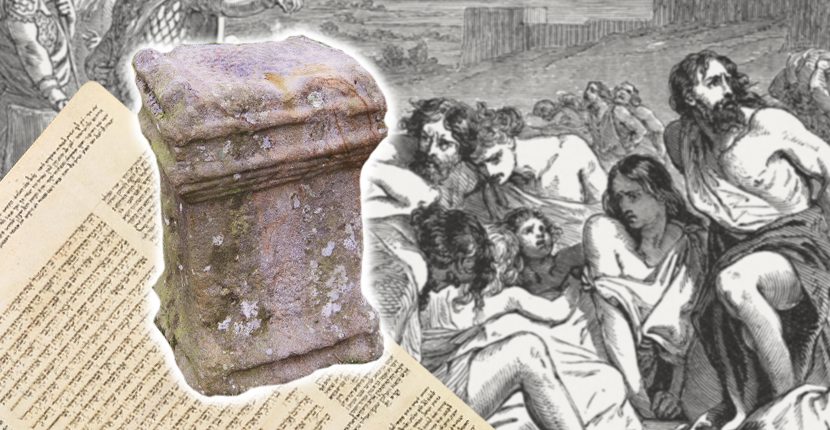An inscription that has been deciphered on an ancient stone altar has provided evidence of an important biblical battle. If the sophistication and development of a culture can be measured, at least in part, by the insights and intricacies of its writers, an ancient altar found in Jordan nine years ago reveals much about the sophistication of Israeli and Moabite scribes many centuries ago.
And if one of a writer’s duties is keeping a record of his society’s conflicts and the motivations behind them, the find in Jordan offers new insights into those between Israel and Moab so long ago.
The region in general and Israel in particular is home to many historical artifacts of great religious significance, but the discovery and understanding of an inscription on a 2,800 yr-old altar reveal more about conflict than spiritual matters.

A sanctuary in the city of Ataroth in Jordan, gave clues to scholars about an ancient Biblical war historians say occurred when the king of Moab led a rebellion against the Kingdom of Israel. (Today, Ataroth is known as Khirbat Ataroth). The rebels took control of Ataroth, also spelled as Atarot. The stone altar is inscribed in two languages, Moabite and an Egyptian writing system of old, called Hieratic. The latter was used for numerical inscriptions, the former for letters.

Originally discovered in 2010, the altar is the subject of ongoing research by historians, archaeologists and linguistic scholars. It clearly depicts the level of skilled writing of the Moabite people 2,800 years ago.
The Hebrew Bible makes references to the conflict, noting that the Moab people had to give their Israeli rulers thousands of lambs every year to placate them, a kind of forced “thank you” for being allowed to go about their daily lives without incident. They also gave the Israelis abundant amounts of wool from rams. The Moab king, Mesha, was unhappy with this arrangement and led the rebellion. When the excavation of the sanctuary took place almost a decade ago, according to several scholars studying the discovery, the rebels did more than take control of Ataroth.

“One might speculate,” two authors wrote in the journal Levant recently, “that quantities of bronze looted from the conquered city…at some later date were presented as an offering at the shrine and recorded on the altar.” He noted that parts of the inscription were almost illegible, but imply that, “4,000 foreign men were scattered and abandoned in great numbers.” They added that the stone’s wording describes Ataroth as “a desolate city.”
Adam Bean of Johns Hopkins University in Baltimore, Maryland, confirmed historians’ view that the Moabite successfully won over Ataroth. Christopher Rollston, a scholar of linguistics who co-authored the study with Bean, noted how important the altar’s discovery was to attempts to understand the writing skills of ancient Israeli culture.
“We often talk about the sophistication of the scribal education of ancient Israel, and rightly so. (But as the altar proves) ancient Moab had some gifted scribes as well.”
Rollston stated that the altar’s very existence shows that Moabite writers had considerable talent, but also their own, unique script. The writings are “the earliest evidence we have so far for a distinctive Moabite script,” he told Live Science after publishing the article with Bean.
The excavation and research into the site is ongoing, under the supervision of Chang-Ho Ji, a scholar from Sierra University in California.
Related Article: Stunning 1,600-yr-old Biblical Mosaics Found in Ancient Galilean Village
Sides in the rebellion viewed the uprising differently. Mesha felt his people were oppressed by the Israelis, but others saw his tactics as cruel. Some records say he slaughtered civilians when the war was underway. Either way, now, there is verifiable evidence that Moabite scribes wrote about the war as well as Israeli scribes, and at least got their side of the story down, literally set in stone.
